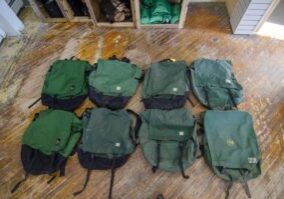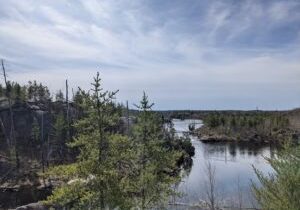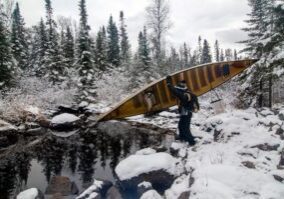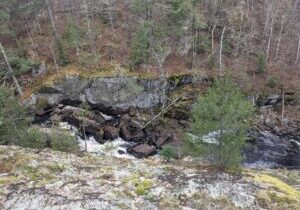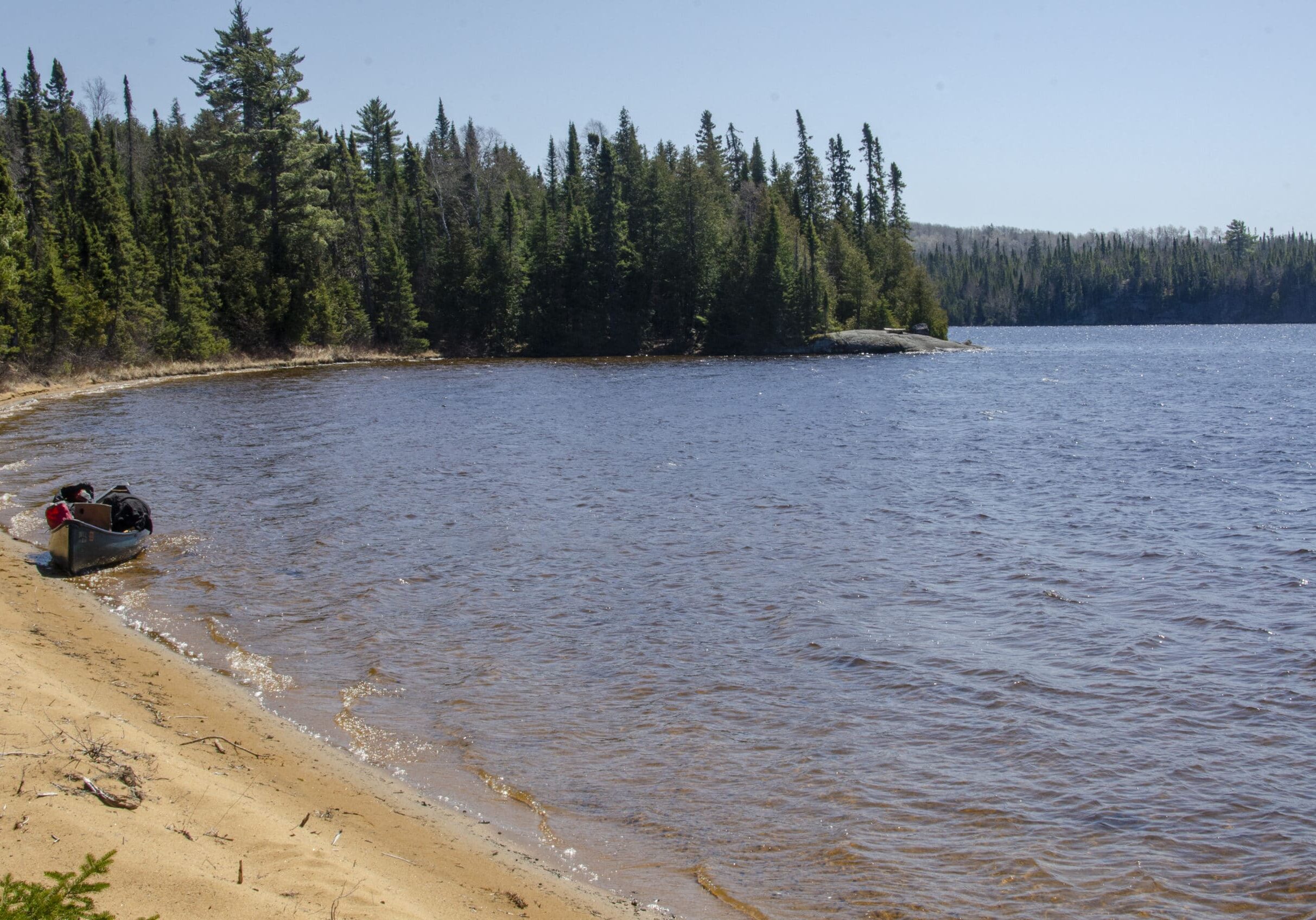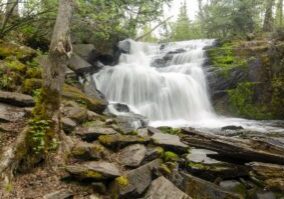It all goes back to a BWCA trivia contest. That’s when it sank it anyways. I consider myself a BWCA nerd, down to the root, so maybe these things are more obvious to me. In any case, an organization that should have been experts in the topic were incorrect in the answers they provided for their trivia contest. I don’t know why it bugged me so. Maybe it was because the internet makes it pretty easy to fact check information (though it also propitiates the mis-information.) Maybe it was because the BWCA means so much to me. In any case, there are quite a few un-true facts out there when it comes to the BWCA. This article will hopefully help clear the air. I also don’t want this article to sound elitist or snobby, but I believe that in understanding comes appreciation. Though the ways we learn about and understand a place like the BWCA, we come to love and respect it more. Let that be the purpose of this article. Without further ado, here are six of the misfacts or untruths I have heard around.
The Largest Lake in the BWCA:
A quick search online and one will routinely see Saganaga touted as both the deepest and largest lake in the BWCA, and honestly, that’s not even close to true. Now, I love Saganaga. It’s a big, beautiful, complicated lake that takes a long time to learn and understand. For the sake of “which lake is the largest in the BWCA” it depends on how you define the question, but Sag isn’t the answer no matter how you calculate it. One way of looking at that question is “what lake has the most acres within the BWCA?” The answer to that question is Basswood which has 14229 surface acres of water within the BWCA. Basswood is closely followed by Lac La Croix which has just shy of 14000 acres, Trout has 7470 acres, and Saganaga has just over 7000 acres within the BWCA. Now, one could read the question as “what is the largest lake that is partly in the BWCA?” This is important because most of the largest lakes are along the border which means the water’s surface is split between the US and Canada. If a person were to use that standard, than the largest lake would be Lac La Croix whose surface measures 29596 acres. Basswood is second with 25952 acres and Saganaga places third with 18766 acres. Now one could also read the question as “what is the largest lake WITHIN the BWCA?” This question feels a little nitpicky because it’s looking for the largest lake entirely within the boundaries of the BWCA. The answer to this question is Trout with its 7470 acres. And finally, one could make an argument for the largest lake being listed by volume, however that’s an inaccessible number for reasons listed in the next section. In any case, I would say the largest lake in the BWCA is Basswood or Lac La Croix and good arguments could be made for either.
The Deepest Lake in the BWCA:
Saganaga also routinely gets listed as the deepest lake in the BWCA with a depth of 280 ft. That number is fairly accurate, and Saganaga would be the deepest lake in the BWCA if the question is “what is the deepest lake touching the BWCA?” However, the deepest spot on Saganaga is located well into the Canadian side. The deepest spot on the US side (in the BWCA) is somewhere around 140 ft deep. To me, the question of the deepest lake in the BWCA is asking the question “what is the deepest spot underwater in the BWCA?” and, honestly, that’s a very tricky question to answer. The lake depths on Saganaga are fairly accurate due to moderately heavy motor usage and a long history of navigation and fishing. For many lakes in the BWCA though, no accurate lake depth exists. There may be a number listed online and rough charts on maps, but much of that data is based on rudimentary measurements, like heavy objects on the end of a rope rudimentary. This is basically the impact of lake depth data being expensive and time-consuming to gather. And the longer it’s been since a lake was mapped, the greater the chance that it was measured by hand without an all-encompassing electronic mapping. With that in mind, Gabimitchigami is a strong contender for deepest within the BWCA with a measured depth of 209′ deep, a number measured in 1980. Mountain is another candidate though the deepest spot on Mountain is on the Canadian side. The deepest on the US side is over 180 ft deep though that number was measured in August of 1939. Kekekabic as well was measured to 195 ft deep in 1964, Gunflint Lake which is connected to the BWCA has purported depths down to 200 ft but, again, not within the BWCA. Knife was measured to 179 ft deep in 1969. Quite a few BWCA lakes are deeper than 100 feet with many of the deepest found east of the Gunflint such as Rose, Pine, Clearwater, or West Pike. Plenty of the big lakes further west along the border are also over 100 ft deep including LLC, Crooked, Basswood, and Ottertrack. And some of the deep lake trout lakes like Takumich, Winchell, Little Sag, Tuscarora, Gillis, Snowbank, and quite a few others are also in that depth class.
The Highest Lake in the BWCA is Lake of the Clouds:
This is another classic example of “list something online long enough and it becomes fact.” I don’t know where this one came from. Is it the name? Was it a rumor spread by someone who suffered up the Gijikiki portage? Beats me. Like the previous two topics, there are a couple of ways to think about this question. The question could be “which BWCA lake is the highest elevation?” The irony here is, if that’s the question, the majority of the lakes east of the Laurentian Divide sit higher that Lake of the Clouds. LOTC sits at just over 1500 ft. The highest elevation lake in the BWCA is Red Eye, the namesake of the 2006 fire, which sits over 500 feet higher than Lake of the Clouds at about 2070 feet. This makes it one of the highest lakes in the state though a chain of lakes to the South outside the BWCA (Thrush, Thrasher, and Bath) do reach higher. If instead of asking which lake is the highest elevation, what if one were to ask about the most prominent lake, the lake that sits the farthest above all the lakes around it? My answer to that question would be one of the lakes east of the Gunflint such as Pemmican, Vale, Gadwall, or Long, though that number is incredibly subjective and hard to calculate. Reference our article on the tallest BWCA portages to get some idea.
The Oldest Tree in Minnesota/BWCA:
This is an impossible number to know for certain, but I can talk about some of the science and the controversy. Two trees in the BWCA routinely claim the title: one tree on Basswood and one on Seagull. Trees can be notoriously difficult to age by their appearance. The official way to age a tree is with an increment core, a device that takes a small sample of wood from the trunk thus allowing a scientist to count the rings without killing the tree. It was by this methodology that Miron Heinselman discovered the dates of many of the BWCA’s fires, and Lee Frelich and others have continued the work. Now, for the two trees vying for the title. The tree on Basswood is massive, it’s a favorite destination for Ely outfitters and camps, and it’s a truly beautiful tree. The Seagull tree is far less visited, it’s a small, twisted ancient thing perched on a rock on an island and is touted as 1000 years of age by Lee Frelich and described in this excerpt: “The canoe nudged ashore near trees that Frelich dated at 550 years old. Their granddaddy–a cedar estimated at 1,000 years old, quite possibly Minnesota’s oldest tree–stood a few feet inland. Only about 25 feet tall, its bark was a weathered and gray.” The tree on Basswood, on the other hand, is advertised as 1100 years of age. Which tree is older, Seagull or Basswood? If I had to bet, my money is on the Seagull tree for this reason. A big, massive tree like the Basswood one is likely a classic case of “that tree is big, it must be old.” And so the stories start and get passed along. Is there a chance the tree is 1000 years old? Absolutely. But keep in mind the number of things which happen in 1000 years. The average parcel of land in the BWCA burns every 75-120 years meaning each tree has possibly avoided 10 fires in their millenia-long lifetimes. They have also survived dozens of windstorms, droughts, and floods. Because of these challenges, oldest trees are never the largest. The oldest trees are those perched on a rock hidden away from fire and too small to be uprooted by wind. The trees that survive grow slow and suffer. And with that understanding of how trees grow and survive, I for one am going with Frelich’s tree on Seagull over the giant on Basswood, though they are both marvelous, special trees deserving of their recognition and respect. And remember that in all wild spaces is an air of mystery. Somewhere on some distant island is a small, contorted cedar that might just be older than either of these that we just haven’t measured yet, and that fascinating unknown is truly special all its own.
The BWCA is Untrammeled Wilderness or the BWCA has Zero Old Growth Left:
These two are different sides of the same coin, so I figured I would tackle them together. The BWCA is a wilderness now, but it hasn’t always been that way. A keen eye on a canoe trip, a step a few feet off a portage, or an exploration of historical accounts and a person is bound to discover traces of the past. The area that’s now the BWCA has had a busy history of resorts, cabins, logging, trapping, trading, mining, roads, and railroads. It’s hard to picture on many of the lakes today, but large swaths of the BWCA were settled to some extent. With that, it’s important to know that, though the BWCA is a very special place which is minimally impacted compared to much of the rest of this country, it does have a history. When talking about old growth, most people’s mind goes straight to the big pines, but it is also important to note that old growth can mean century-old aspen, it can mean pockets of cedars along the shore (see the last paragraph), and it can even mean a bog filled with stunted black spruce. For the sake of this article though, I’ll be focusing on the big pines since it’s what many people think of when discussing old growth in the BWCA. The big pines were also the focus of the initial logging efforts into the region. Because of this, many people understanding this history say that the entire BWCA was logged and no old growth remains. Other people, unaware of this history, assume much of the BWCA outside of the new burn zones is old growth pine and that’s not the case either. The answer, of course, is much more complicated. Miron Heinselman’s work recorded stands of red and white pine as old as the 1600s with individual trees reaching into the 1500s still standing into the 90s. Plenty of other stands date to the 1700s and 1800s. It’s important to understand that the BWCA is part of a complicated fire mosaic of forested land with some ancient stands intermixed with forests of various ages dating to various fires. And though large sections of the BWCA such as most of Basswood, the Isabella region north to the Numbers and Hudson, and areas west of Burntside were logged, sometimes multiple times, in the last century. Other parts of the BW were set aside as roadless areas earlier. Other parts had the fortune of remaining remote long enough or were small enough pockets to get overlooked. So yes, some of the BWCA still shows the impact of past logging and thus is difficult at times to see as “true wilderness” (just take a walk on the north arm ski trails towards Coxey Pond sometime.) And yes there are still remote lakes with ancient pines that still bear scars from fires during the civil war. And areas which are burned over today or logged over 40 years ago will recover and may someday fit that image of old growth we have in our heads. The important thing to remember is the BWCA is naturally a very dynamic ecosystem which is constantly renewing itself. What we see today is not what will be here tomorrow and there’s beauty to be found in that process.
The Number of Pictograph Sets in the BWCA:
It’s hard to speak with certainty about any traces of the past because stories, legends, and memories all get jumbled. Some sources say there are two pictograph sets in the BWCA, a number which way undershoots the mark. Most maps of the BWCA mark only the sets on Crooked, LLC (on the Canadian side), Island River (just outside the BW), South Hegman, Fishdance, and sometimes the western set on LLC, and the sets on Rocky and Jordan. There’s also a good number marked in the Quetico. Truth be told, no one knows with any deal of certainty how many pictograph sets are in the BWCA. Even as experts set out to explain them or establish patterns of where they can be found, there always seems to be an outlier or two. A couple amazing books go into the pictographs in detail and I highly recommend checking them out if history is at all fascinating to you. Part of the challenge in establishing how many pictograph sets are in the BWCA is found in the fact that the landscape is vast and no one has seen it all and the faces the pictographs are on are constantly changing. Sig Olson has an excerpt about pictographs he was familiar with disappearing through the years, not because the pigment faded, but because lichen has a way of covering them up. If a fire or other event scrapes the lichen away, the potential is there for the pictographs to reappear. Other sets have had their pigment fade away due to the exposure of their particular sites. With that understanding, there are around a dozen really good sites in and around the BWCA with relatively clear pictographs on them. Many of these are not marked on a map or clearly defined in literature, but that’s part of the charm and helps protect the sets themselves. Outside of those, there are plenty of other sets around vaguely mentioned in literature that are hard if not impossible to find today (remember, the faces are constantly changing.) I can also say that every now and again, another set is found that was previously unrecorded. I myself have had the pleasure of stumbling on a couple. So with that in mind, one can only imagine how many sets are tucked around the next rock face or concealed behind lichen.
Sign up for our newsletter to receive updates about new articles, great deals, and information about the activities you love and the gear that makes them possible:
Have You Read Our Other Content?
Map Mondays – Week 8 – South Kawishiwi to Moose Lake
As part of our continuing series on the “route planning game,” we are creating routes using randomly selected entry points, exit points, and number of days to create unique and fun BWCA routes. Let’s check it out! Total Mileage: 51 milesNights: 4Paddle Distance: 46.7 milesPortage Distance: 4.4 miles Day 1: Miles: 9.4Target Campsite: Kawishiwi River…
Echoes of ’93 – Managing a Complicated Wilderness
“There is currently too much visitor use in some areas of the BWCAW on some days. Excessive use results in the following impacts: Off-site camping on non-designated sites which impacts vegetation, soils, and heritage resources. Some designated campsites and portages are too heavily impacted based upon our LAC inventory data. Approximately 85% of all existing…
How to See the BWCA in One Trip
When it comes to planning trips, I can be a bit of a dreamer, and if you’re anything like me, you spend a great deal of time thinking about what could be possible. I may not have the days lined up or the permits pulled yet. I may not even know which friends will…
Map Mondays – Week 1 – Hog Creek to Skipper/Portage
As part of our continuing series on the “route planning game,” we are creating routes using randomly selected entry points, exit points, and number of days to create unique and fun BWCA routes. This week is a big trip of nine nights from Hog Creek to Skipper/Portage. It’s certainly a big and challenging route, but…
The Comprehensive Guide to Portaging Like a Pro
We all took our first portage somewhere. From those first tender rods on wobbly legs, we each struggled to carry all our gear from lake to lake. For many of us, this was also a time of questions: “Why did I bring so much gear?”, “Why is my canoe so heavy?”, “Am I in good…
Map Mondays – Week 12 – Little Indian North to Moose River North
As part of our continuing series on the “route planning game,” we are creating routes using randomly selected entry points, exit points, and number of days to create unique and fun BWCA routes. This route works through parts of the BWCAW’s far western end from the furthest west EP of the BWCA through big lakes…
Smoke On the Horizon – How Fire Towers Changed BWCA History
A drive out from Ely today, and you won’t see many fire towers. They’ve vanished as antiquated methods of dutiful rangers past. But less people remember how those fire towers have shaped our wilderness experiences.
Is it Spring in Canoe Country Yet?
This winter has felt like a long one. The final weeks before opening water always do, but this year has felt extra drawn out. Numerous cities in Minnesota have broken their snowfall records and ice is still firmly on the lakes around Ely. To the Boundary Waters enthusiast, this is a painful time of year…


